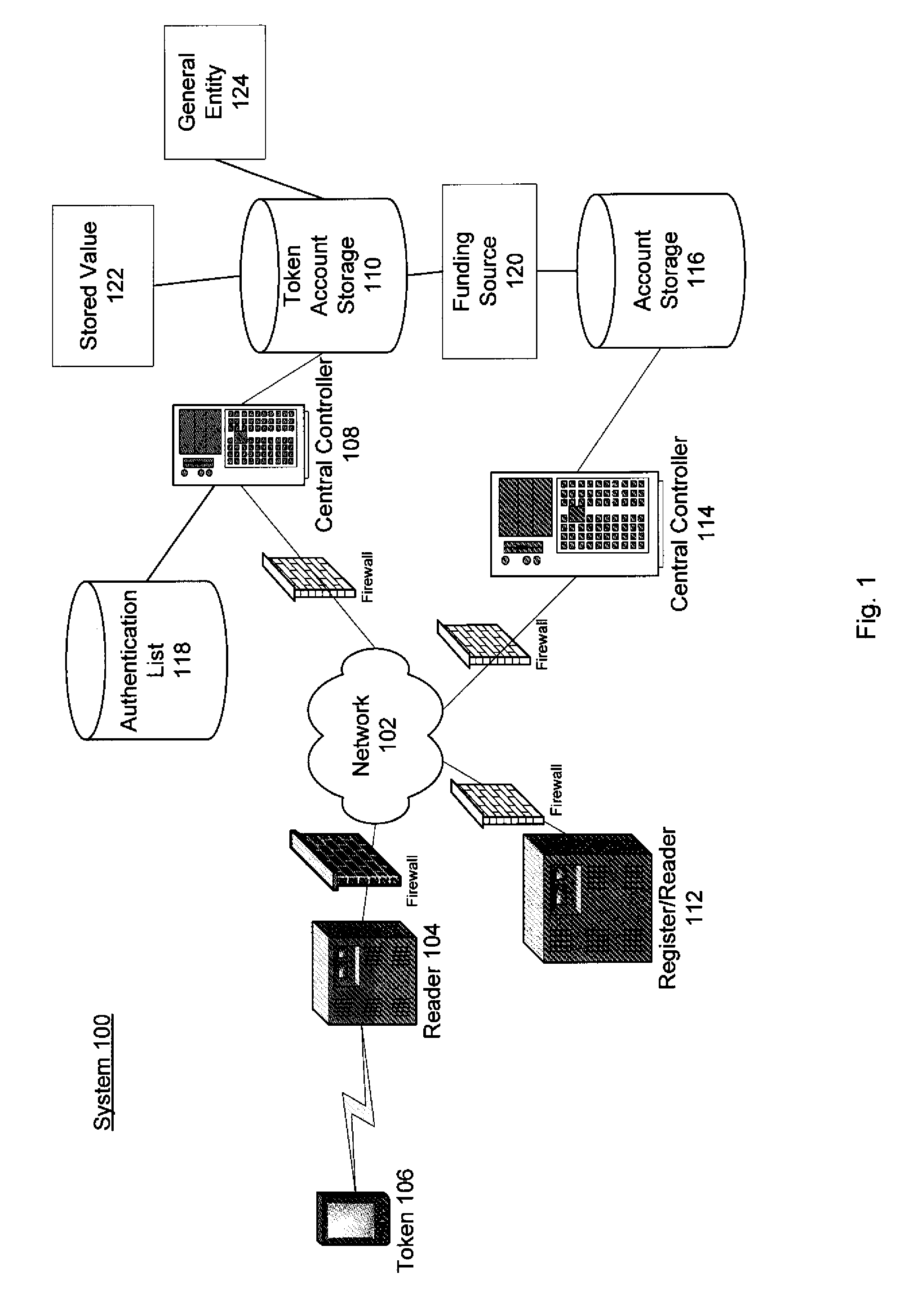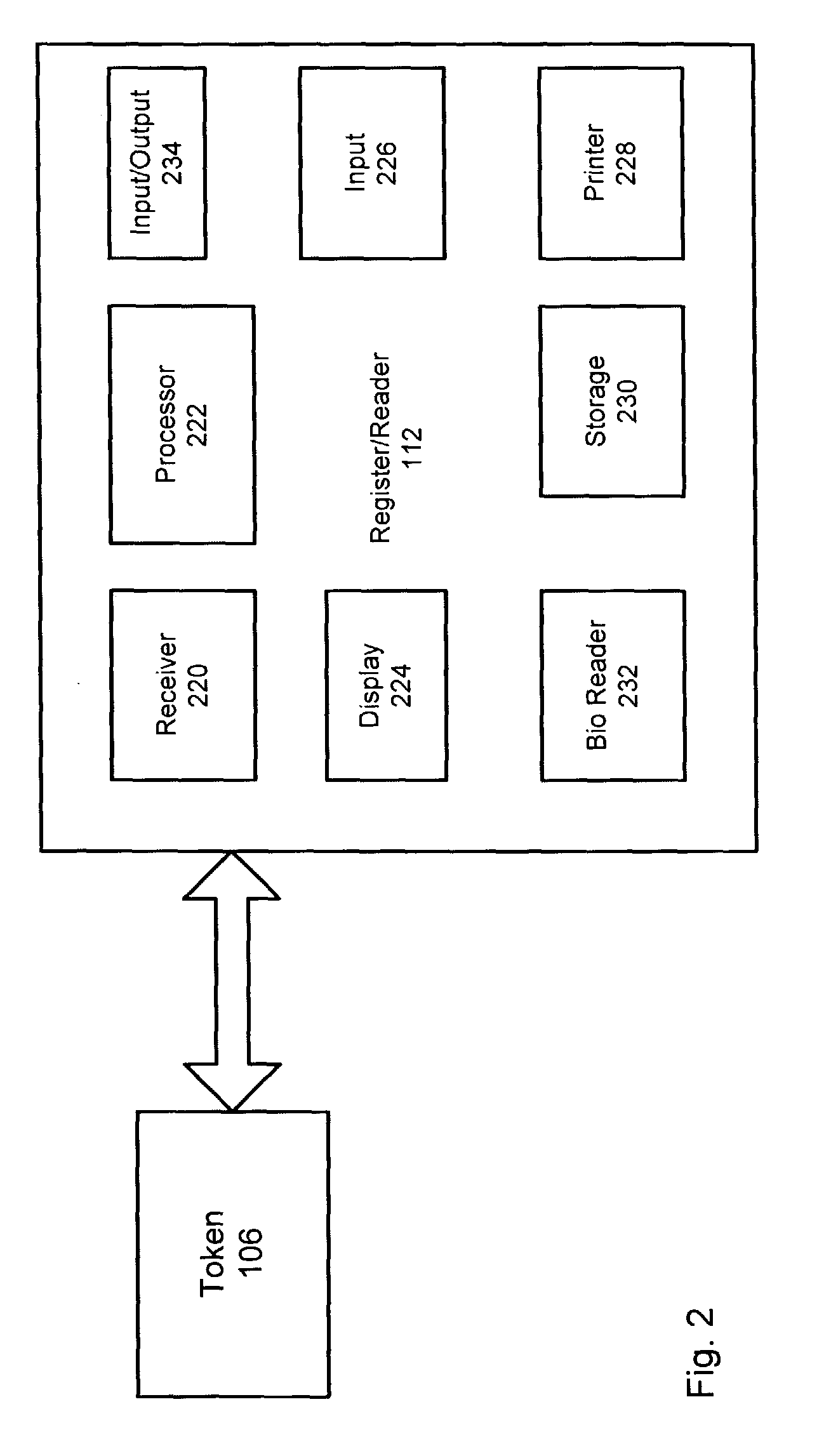System and process for performing purchase transactions using tokens
a technology of purchase and token, applied in the field of authentication token, can solve the problems of consumers being reluctant to carry new devices, frustrated by the new payment mechanism, and reluctant to pay the cost of installing new readers for the technology,
- Summary
- Abstract
- Description
- Claims
- Application Information
AI Technical Summary
Benefits of technology
Problems solved by technology
Method used
Image
Examples
example 1
Secure Linking of Passive RFID Devices to Active Communications Devices
[0065]Just as a passive RFID device can be registered to enable multiple payments modes (e.g., credit cards, debit and stored value accounts, etc.), and other non-payment authorizations; RFID devices can be securely linked to other devices, including Active Communications Devices. By registering a passive RFID device with an Active Communications Device's unique identifier, that Active Communications Device can inherit all the authentication and authorization capabilities of the passive RFID device. Thereafter, the holder of a passive RFID device could use it wherever it is convenient (e.g., where a merchant's POS is capable only of recognizing a passive RFID device) and would also use the same set of capabilities using his Active Communications Device to take advantage of less limited reader capabilities where available.
example 2
Shared Secret Linking Passive RFID Devices to Active Communications Devices
[0066]In the case of automotive security, during secure instantiation of each token, the engine controller communicates its secret to the token. The engine controller will start the car only for ‘friendly’ tokens that know its secret. For example, controller A (the engine controller) shares its secret with token B (the token). Because controller A controls distribution of its secret, controller A will trust all token Bs that know its secret.
[0067]To establish a link between a passive RFID device and an Active Communications Device that can be trusted by RFID readers may be somewhat more complex. In a first embodiment, the Active Communications Device may securely share its secret with the passive RFID device in a manner similar to the way that engine controllers instantiate tokens and in a carefully controlled circumstance. The passive RFID device subsequently may communicate to a RFID reader both the passive...
example 3
Ad Hoc Linkage of Passive RFID Devices to Active Communications Devices
[0069]Linkage of a passive RFID device to an Active Communications Device by prior arrangement may be useful when that linkage is intended to be persistent. There are circumstances where such persistence is not desirable. For example, suppose in the future a driver rents a car and wishes to use his passive RFID token to pay tolls. Rental cars are used by many different people, persistent linkage of RFID devices personal to drivers present problems for such temporary connections. One means to provide for payment of tolls would be to take advantage of the driver's payment capability, by simply using a car's transmitter to broadcast that capability to the toll collectors. The system would work so long as the car validates the drivers ability to pay and is trusted as a payment agent or the transmitter can directly pass the driver's credentials.
[0070]Small, relatively inexpensive toll tags permit cars to be recognized...
PUM
 Login to View More
Login to View More Abstract
Description
Claims
Application Information
 Login to View More
Login to View More - R&D
- Intellectual Property
- Life Sciences
- Materials
- Tech Scout
- Unparalleled Data Quality
- Higher Quality Content
- 60% Fewer Hallucinations
Browse by: Latest US Patents, China's latest patents, Technical Efficacy Thesaurus, Application Domain, Technology Topic, Popular Technical Reports.
© 2025 PatSnap. All rights reserved.Legal|Privacy policy|Modern Slavery Act Transparency Statement|Sitemap|About US| Contact US: help@patsnap.com



